Rare Rides Icons: The History of Imperial, More Than Just a Car (Part XIII)

We entered the Fuselage Look era of the Imperial in our last installment, as Chrysler shook off the conservative and upright styling its flagship brand wore prior to 1969. Prices were notably slashed and quality suffered as Imperial shared body panels with its Chrysler siblings, incidents that in previous decades would’ve been out of the question. We pick up in 1970, for the second year of the C-body Fuselage Imperials.
After its debut Fuselage year, the Imperial began a process of streamlining and general decontenting. The update to the new appearance improved sales and proved that Imperial customers were willing to accept body panel and parts sharing if it meant the car was cheaper to purchase. The bespoke LeBaron and Ghia bodied days of Imperial grew more alien to the modern Seventies domestic car buyer with each passing year.
For 1970 Series EY (L, M) changed to FY (L, M). Visual changes were minor, the most notable of which was a new grille. The 1970 grille had larger egg-crate-style segments than the prior year and a more uniform look across the visage. Gone were the two distinct rows to the grille, as a unified block took its place wearing lessened chrome. While the front bumper was unchanged, the front corner markers within lost their grille detailing. Marker lenses grew larger and took up the vacant real estate.
Along the lower front fender, the prior three-slot parking lamp design was replaced by a rectangular unit. That meant a singular hole in each fender corner instead of three. The body crease along the fender that ran through the end of the rear door was now exposed, as the chrome spear which rested right below it was deleted. Instead, a slimmer chrome strip appeared in line with the corner marker and ran the full lower length of the body. Imperial script on the fenders kept with the times and was replaced with an Imperial eagle logo. On the rear pillar, Imperial script appeared where there was an eagle the year prior.
New wheel covers were simpler than before, of a smooth dog dish design instead of turbines. Said wheel covers were now more visible, as for a single year fender skirts disappeared. At the rear, more subtle changes occurred and included a revised segmented tail lamp design, more decorated than the simple lines of the prior year. There were electrical changes at the rear as well, as 1969 was the only Fuselage Imperial with sequential turn indicators. Corner reflectors migrated from the rear fender and into the vertical spear of the rear bumper. Imperial block lettering migrated up to the top of the bumper, which made space in the center of the tail lamp assembly for a larger reversing lamp.
There were fewer Imperial body styles than before in the lineup, as the lower-priced four-door sedan vanished. The two- and four-door hardtops remained, available in base Crown (L) and LeBaron (M) trim. There were no engineering changes this year, and the general trim fiddling drew in many fewer new customers. Total sales for 1970 were 11,822, down nearly half from the introductory ’69’s figure of 22,083. Noticing the lower sales figures, Chrysler responded appropriately: The Imperial experienced noticeable cuts for the 1971 model year.
For 1971, Series FY (L, M) turned into Series GY (M), one of the first indicators of Imperial’s trajectory. A single trim level remained, as the longtime Crown trim disappeared. Remaining was the top-tier LeBaron, which Chrysler viewed as “M” for middling. The same two body styles remained as before, a hardtop sedan and coupe. There were some engineering changes this year, one of which was a notable safety advancement.
That year, Imperial became the first production car in America to offer four-wheel computer-controlled Bendix ABS as optional equipment. Though Chrysler cornered the market this year with the exclusive option, it was an expensive one and seldom selected. Overall, Imperial prices decreased for 1971 if inflation is factored in. A four-door hardtop asked $6,276 ($43,963 adj.) and the two-door was slightly more affordable at $6,044 ($42,388 adj.). Worth noting, though all other dimensions remained the same in 1971, the overall height increased slightly: The low 55.7-inch height of 1969 and 1970 grew to 56.1 inches in 1971.
The integrated look of the 1970 Imperial grille was changed this year, as small Imperial eagle logos and satin plastic rectangular trim pieces were applied to the Imperial’s headlamp doors, replacing the Imperial script logo that was on the driver’s side since 1969. The Imperial eagle ornament on the hood was no more, as block Imperial lettering stretched far across the metal expanse instead. Corner markers and the lower fender indicator remained the same as the year before, as did the chrome strip detailing. Wheel covers were the same design too, though fender skirts made a triumphant return to the fold. Absent from fenders was an Imperial eagle logo.
Tail lamp arrangements and reverse indicator lights remained the same this year, as did the trunk-mounted Imperial eagle logo. The block Imperial lettering on the bumper changed position, as it migrated onto either side of the rear fender. Newly placed large lettering was located above the chrome trim strip. One significant change at the rear of all Imperials appeared in 1971: A little badge on the trunk lid that said: “IMPERIAL, by Chrysler.” The company started to fold Imperial back into its standard brand portfolio, as the marque faded from its Fifties reputation for quality and luxury. An indication of the future, the 1970 Imperial sales materials were the last time the brand was presented independently. In 1971 the Imperial detail was a part of the standard Chrysler brochure. The two Chrysler Imperials were advertised right next to the very similar New Yorker. Gasp!
But it wasn’t all negatives, as a festive new feature was added to dress up Imperial’s standard vinyl roof in 1971. Paisley patterned vinyl was offered in a singular burgundy color and was only available on cars painted in burgundy. The paisley was a slow seller, which turned out fortunate for Chrysler: As Imperials sat outside in the elements, the burgundy vinyl faded to a purple color. Though not a recall, dealers at the time were willing to replace faded roofs with standard white or black vinyl. Perhaps the rarest 1971 Imperial then would be one with the paisley roof still in original colorful condition.
1971 was another slow year for Imperial, as sales slid slightly to 11,569 total cars. Of those 10,116 were the four-door, and the unpopular two-door moved 1,442. After a three-year run, the fourth-generation Imperial was ready for all-new metal. It was a considerable change for what might’ve been deemed a mid-cycle update for 1972. We’ll finish out our fourth-gen coverage next time, and head into the fifth and final independent Imperial of the Seventies.
[Images: Chrysler]

Interested in lots of cars and their various historical contexts. Started writing articles for TTAC in late 2016, when my first posts were QOTDs. From there I started a few new series like Rare Rides, Buy/Drive/Burn, Abandoned History, and most recently Rare Rides Icons. Operating from a home base in Cincinnati, Ohio, a relative auto journalist dead zone. Many of my articles are prompted by something I'll see on social media that sparks my interest and causes me to research. Finding articles and information from the early days of the internet and beyond that covers the little details lost to time: trim packages, color and wheel choices, interior fabrics. Beyond those, I'm fascinated by automotive industry experiments, both failures and successes. Lately I've taken an interest in AI, and generating "what if" type images for car models long dead. Reincarnating a modern Toyota Paseo, Lincoln Mark IX, or Isuzu Trooper through a text prompt is fun. Fun to post them on Twitter too, and watch people overreact. To that end, the social media I use most is Twitter, @CoreyLewis86. I also contribute pieces for Forbes Wheels and Forbes Home.
More by Corey Lewis
Latest Car Reviews
Read moreLatest Product Reviews
Read moreRecent Comments
- Ajla IMO, something like this really should be naturally-aspirated.
- Kjhkjlhkjhkljh kljhjkhjklhkjh Unless they are solid state batteries you BAN THEM. I like EVs... but EVs like to burn ... for days
- Kjhkjlhkjhkljh kljhjkhjklhkjh uh .. it looks like a VW golf got the mumps
- Kjhkjlhkjhkljh kljhjkhjklhkjh I CANNOT WAIT FOR SOCIAL SECURITY TO GET GUTTED.. No i am really serious. I am insulated thanks to 24 years at Symantec then Broadcom .. tons of retirement cash. but all the blue hairs and low income trump voters are going to lose benefits and jobs and i get to laugh allllll dayyyyy long in about 2-3 years.. CANNOT WAIT, POPCORN READY.
- Kjhkjlhkjhkljh kljhjkhjklhkjh no. to many '''''americans'''' just want a CUV or SUV according to sales numbers



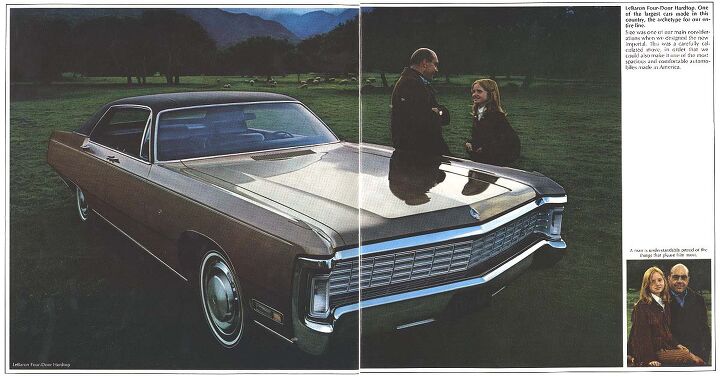
























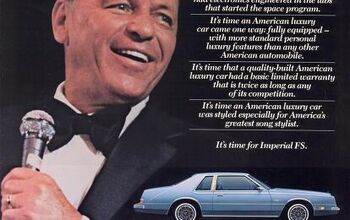
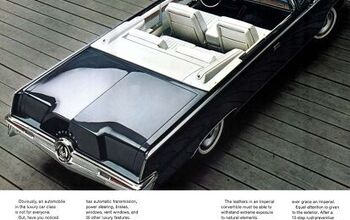
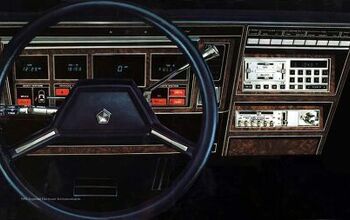
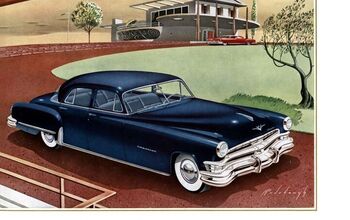
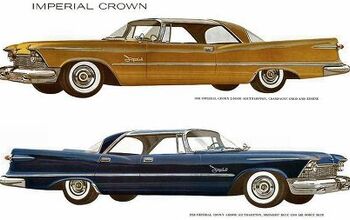










Comments
Join the conversation
Uh is anyone else creeped out by the small picture in the right-hand corner of the first image and its Caption? The picture looks like the girl is there against her will the guy has a creepy half-smile and the caption, "A man is understandably proud of the things that please him the most." It would be fine if it was a picture of the guy and the car, but it's just him and the girl.
Agree a hybrid gussied up Navigator and Escalade with a hybrid turbo V6 would go over with celebrities add a large grill with LED lights and LED lighted emblems.